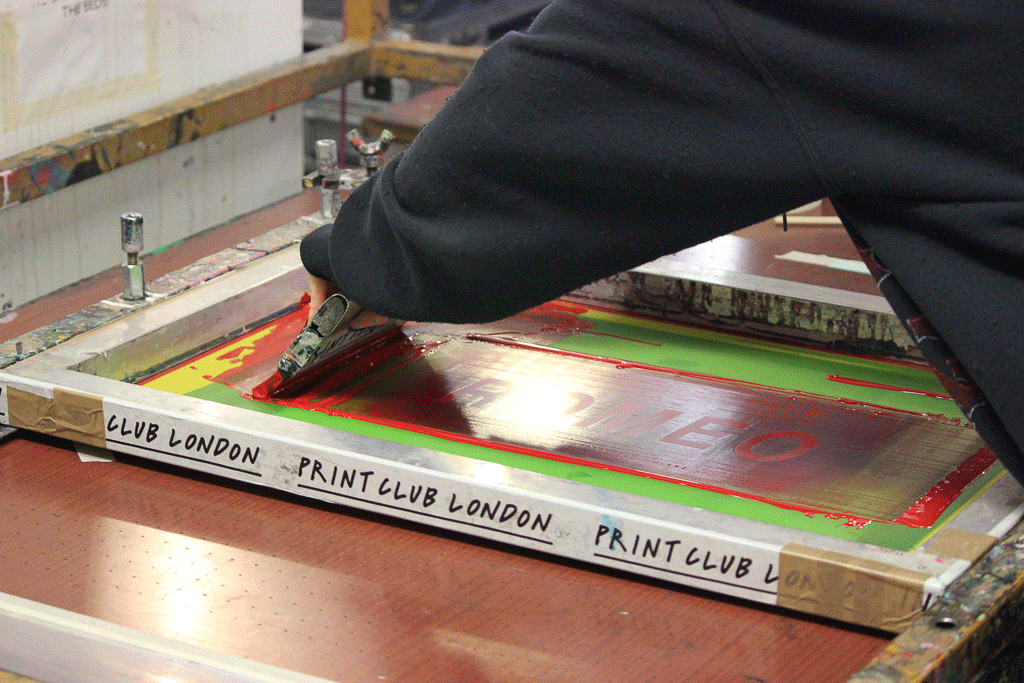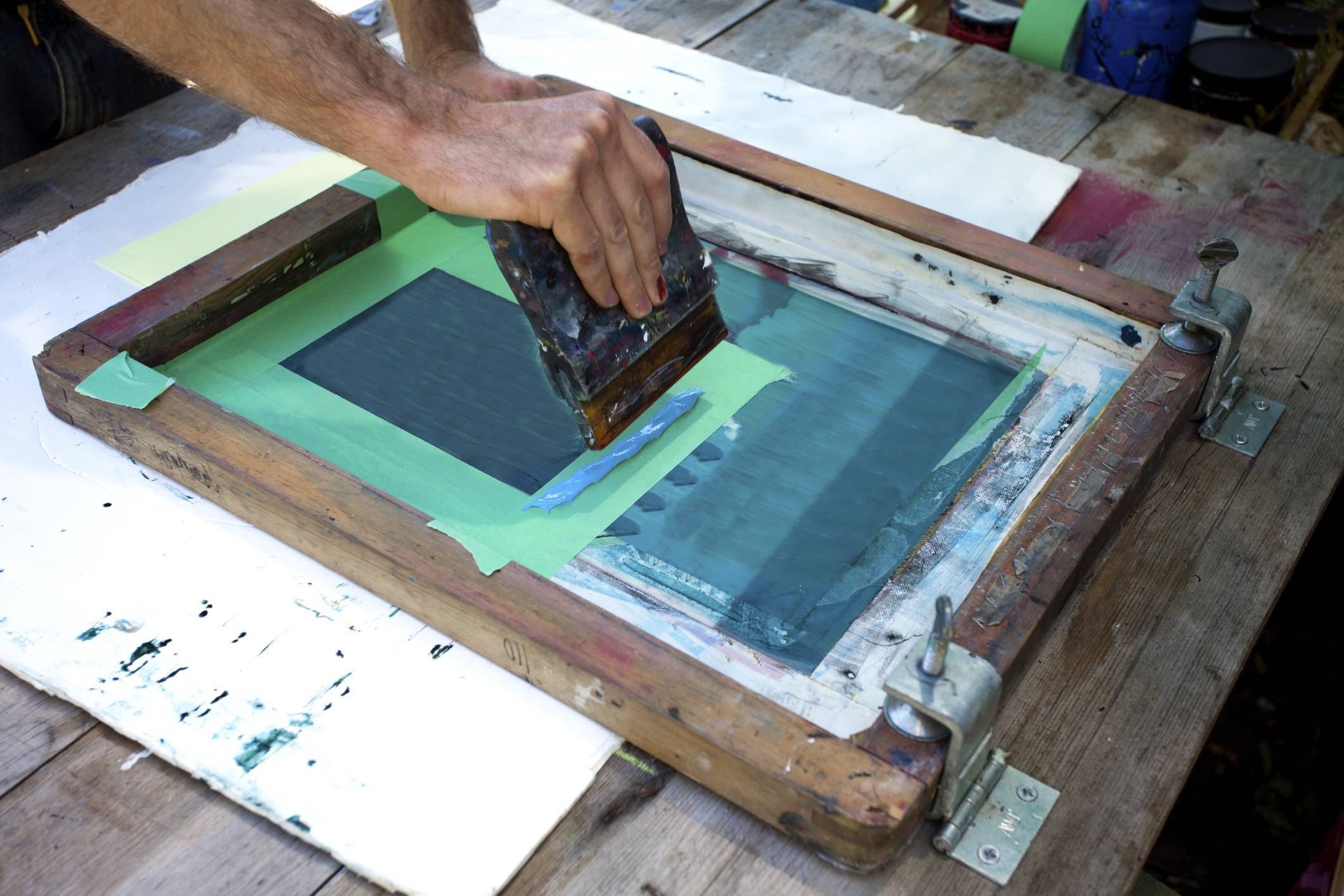Discover the Different Types of Screen Printing Techniques for Your Following Task
Screen printing supplies a diverse variety of strategies that can improve any creative task. From traditional methods like serigraphy to modern-day advancements such as direct-to-garment printing, each technique has its distinct advantages. Specialty alternatives, including green and metallic inks, introduce even more possibilities. Understanding these strategies can substantially influence the last outcome. However, the challenge hinges on selecting the most appropriate approach for particular requirements and wanted effects. What variables should one take into consideration?

The Essentials of Screen Printing
Screen printing may appear complex, it is fundamentally an uncomplicated procedure that entails moving ink with a mesh screen onto numerous surfaces. The technique starts with the production of a pattern, which specifies the style to be published. This pattern is affixed to a mesh screen, commonly made of polyester or nylon. Once the pattern is in place, ink is used to the screen and pushed via the mesh using a squeegee, resulting in the wanted pattern being printed on the underlying material.
Screen printing can be done on a vast array of substrates, consisting of plastic, textile, and paper, making it a versatile choice for various jobs. The procedure permits vibrant colors and complex designs, making it preferred in industries such as style, advertising, and art. Recognizing these fundamentals outfits individuals with the foundational expertise called for to explore more sophisticated techniques in screen printing.
Conventional Screen Printing Techniques
Conventional screen printing methods have been utilized for centuries, preserving the workmanship and creativity of this method. This approach makes use of a mesh screen to move ink onto a substrate, such as material or paper, enabling lasting and dynamic designs. The process begins with creating a pattern, which obstructs specific areas of the screen to regulate where the ink will be applied.
One preferred technique is serigraphy, usually utilized for limited editions and imaginative prints. Another is making use of water-based inks, which are environmentally friendly and offer a soft feeling on fabrics - 10:9 Design reviews. In addition, conventional methods can consist of hand-operated printing, where artisans use ink with a squeegee, ensuring accuracy and attention to information
These strategies continue to be valued in the market for their responsive top quality and the one-of-a-kind appearances they generate, interesting both consumers and developers that appreciate the heritage of screen printing.
Digital Screen Printing Innovations
As the demand for faster manufacturing and modification in the printing sector has risen, digital screen printing advancements have become a game-changer. This technology mixes standard screen printing techniques with electronic processes, permitting fast prototyping and detailed layouts that were formerly difficult to achieve. One substantial advancement is the introduction of direct-to-garment (DTG) printing, which facilitates top notch, full-color prints on various fabrics without the demand for displays. Furthermore, developments in ink formulas have brought about eco-friendly choices that maintain lively colors while reducing ecological influence. Making use of automated systems even more enhances manufacturing, lowering labor prices and improving accuracy. These advancements not just satisfy little batch orders and tailored layouts yet likewise permit quicker turnaround times, making them perfect for businesses concentrated on conference client needs in a hectic market. Digital screen printing, as a result, stands for a vital development in the domain of printing strategies.
Specialized Screen Printing Methods
Exploring specialized screen printing approaches reveals a varied variety of techniques that press the borders of creativity and performance in the printing industry. Amongst these, glow-in-the-dark inks provide an unique aesthetic effect, making layouts come alive in low-light problems. Metallic inks, known for their sparkling surface, add a touch of deluxe to printed products. An additional cutting-edge method is discharge printing, which removes dye from the material rather than including ink, causing a soft, vintage feel. High-density printing creates a raised texture on the surface area, enhancing responsive engagement. Furthermore, water-based inks are gaining appeal for their vibrant colors and reduced ecological effect. Each of these specialty strategies accommodates details layout requirements, allowing artists and brands to produce standout products that reverberate with their target markets. By leveraging these methods, organizations can elevate their screen printing jobs to new heights, ensuring memorable impressions.
Eco-Friendly Screen Printing Options
Environment-friendly screen printing alternatives are getting traction as the market moves in the direction of sustainability. Lasting ink selections and the use of eco-friendly materials are essential components in minimizing the environmental impact of the printing process. By adopting these techniques, screen printers can contribute to a more sustainable future while preserving premium results.
Sustainable Ink Selections

Biodegradable Materials Use
As the screen printing sector advances, the unification of eco-friendly materials is becoming significantly crucial for eco aware practices. Developers and producers are now checking out inks and substrates made from natural, renewable energies that decompose a lot more efficiently than traditional equivalents. These eco-friendly alternatives lower plastic waste and lessen environmental impact, aligning with the growing demand for sustainable items.
Typical examples include water-based inks and organic cotton materials, both of which reduce harmful chemicals and promote eco-friendliness. Brand names that take on these materials commonly enhance their market charm, attracting consumers who prioritize sustainability. As understanding of environmental issues remains to rise, the change in the direction of naturally degradable materials in screen printing is most likely to gain energy, cultivating a greener sector criterion.
Selecting the Right Strategy for Your Task
Just how can one identify one of the most suitable screen printing method for a certain project? The decision pivots on a number of variables, consisting of the material to be published on, the complexity of the layout, and the wanted production volume - 10:9 Design near me. As an example, direct-to-garment printing is perfect for complex designs with many shades, while traditional screen printing stands out for larger runs of less complex graphics
Additionally, consideration of the end-use of the published thing is important. For outdoor applications, strategies that use durability and climate resistance, such as plastisol ink, may be chosen. Conversely, environmentally-conscious projects might gain from water-based inks or biodegradable materials.
Ultimately, understanding the task's unique needs permits an enlightened selection, guaranteeing both visual appeal and practical long life. By assessing design complexity, product compatibility, and production scale, one can properly pick one of the most appropriate screen printing method to fulfill their job's objectives.
Regularly Asked Concerns
What Is the History of Screen Printing?
Screen printing came from in ancient China around 1000 ADVERTISEMENT, progressing through Japan and Europe. By the 20th century, it ended up being prominent in commercial art and style, reinventing just how layouts were generated and distributed around the world.

Just how Do I Prepare Artwork for Screen Printing?
To prepare artwork for screen printing, one should assure high resolution, utilize a suitable shade mode, create separate layers for each and every shade, and transform message to outlines, ensuring compatibility with the printing procedure and wanted end result.
What Materials Are Best for Screen Printing?
The most effective materials for screen printing include premium inks, long lasting displays, and suitable substratums like cotton, polyester, or blends. Furthermore, utilizing proper solution and mops can enhance the printing procedure and final outcomes.
Can I Screen Publish in your home?
Yes, screen printing at home is possible. With the appropriate materials, configuration, and methods, people can produce premium prints. Cautious factor to consider of work area and devices is crucial for effective outcomes.
What Are Common Blunders in Screen Printing?
Usual mistakes in screen printing include incorrect direct exposure times, insufficient ink uniformity, misalignment of screens, not enough cleaning of products, and ignoring to test prints. These mistakes can endanger the quality and precision of the last product.
Screen printing might seem complicated, it is basically a simple procedure that entails transferring ink with a mesh screen onto various surface areas. As the demand for faster production and personalization in the printing sector has actually surged, electronic screen printing innovations have emerged as a game-changer. Checking out specialized screen printing methods reveals a diverse range of strategies that press the boundaries of creative thinking and capability in the printing sector. The best products for screen printing include top notch inks, sturdy screens, and suitable substrates like cotton, polyester, or blends (10:9 Design Screen Printing). Usual errors in screen printing include incorrect exposure times, insufficient ink consistency, misalignment of screens, insufficient cleaning of products, and neglecting to evaluate prints